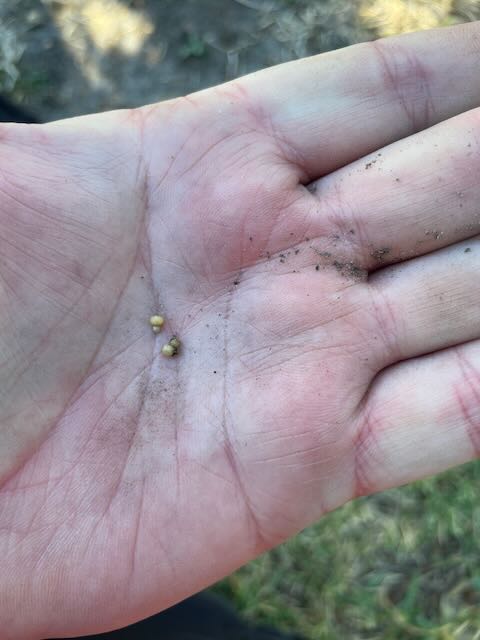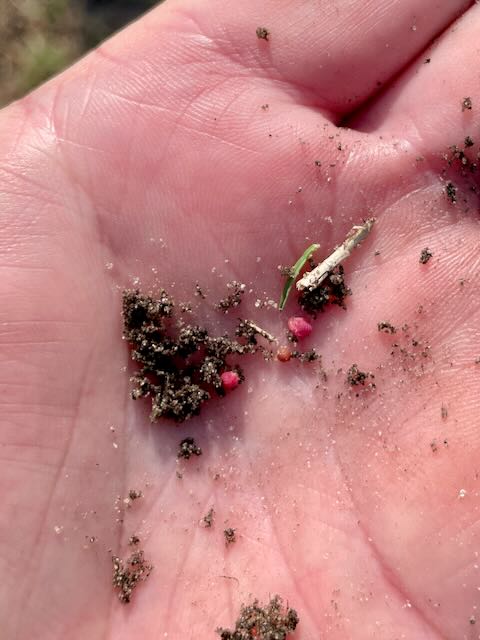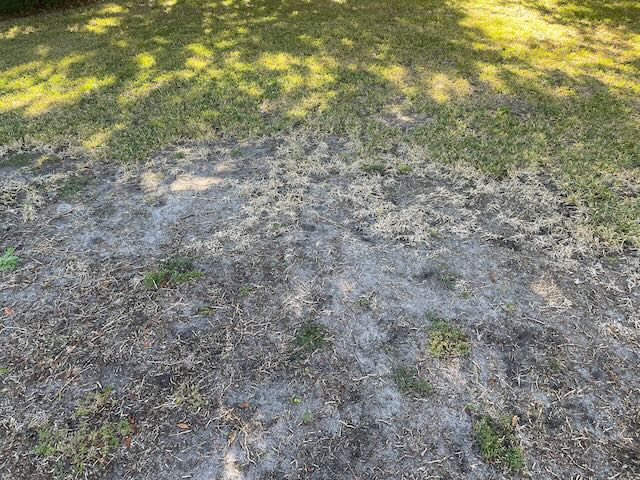Ground Pearls in Turf
go.ncsu.edu/readext?966077
en Español / em Português
El inglés es el idioma de control de esta página. En la medida en que haya algún conflicto entre la traducción al inglés y la traducción, el inglés prevalece.
Al hacer clic en el enlace de traducción se activa un servicio de traducción gratuito para convertir la página al español. Al igual que con cualquier traducción por Internet, la conversión no es sensible al contexto y puede que no traduzca el texto en su significado original. NC State Extension no garantiza la exactitud del texto traducido. Por favor, tenga en cuenta que algunas aplicaciones y/o servicios pueden no funcionar como se espera cuando se traducen.
Português
Inglês é o idioma de controle desta página. Na medida que haja algum conflito entre o texto original em Inglês e a tradução, o Inglês prevalece.
Ao clicar no link de tradução, um serviço gratuito de tradução será ativado para converter a página para o Português. Como em qualquer tradução pela internet, a conversão não é sensivel ao contexto e pode não ocorrer a tradução para o significado orginal. O serviço de Extensão da Carolina do Norte (NC State Extension) não garante a exatidão do texto traduzido. Por favor, observe que algumas funções ou serviços podem não funcionar como esperado após a tradução.
English
English is the controlling language of this page. To the extent there is any conflict between the English text and the translation, English controls.
Clicking on the translation link activates a free translation service to convert the page to Spanish. As with any Internet translation, the conversion is not context-sensitive and may not translate the text to its original meaning. NC State Extension does not guarantee the accuracy of the translated text. Please note that some applications and/or services may not function as expected when translated.
Collapse ▲As an Extension Agent, I often get asked about ground pearls. Because we have sandy soil here in Carteret County, it’s easy to blame something that can’t be easily seen for problems with the turf. Here are several questions with answers that I often get asked about ground pearls.

Shell on ground pearls.
What are ground pearls? They are an insect that feeds on the roots of turfgrass. They hatch out of an egg in early spring and crawl in the soil until they find a root of some turfgrass where they insert their piercing-sucking mouthpart into the root and then create a creamy or gray shell around themselves, very much like a shell of a scale insect. They are more prevalent in sandy soils than they are in heavy clay soils.

Ground pearl crawlers in May are easier to see.
What do ground pearls look like? In the spring when the crawlers hatch out and are moving around in the soil, they are pink and fleshy. This is actually the best time to see them. They stand out from the soil, making them easy to find. Here in Carteret County that is usually in late May or early June. After they have formed the shell around themselves they are either creamy or gray in color and round to egg shaped, and they are about the size of a large piece of sand or maybe a little larger, but the shells are smooth rather than angular like sand.
What can be done to control ground pearls if they are found in the lawn? Currently the best recommendation is to maintain a healthy lawn by following the lawn maintenance calendar for the lawn grass that you have. Use the correct mowing height and frequency so that no more than one third of the grass height is being removed at any one time. Keep the lawnmower blade sharp. Irrigate when needed to keep the grass growing. Also fertilize the lawn so it has the nutrients needed in order to grow. There are currently no known chemicals that offer effective control of ground pearls on the market. A healthy and vigorous lawn is the best defense against ground pearls.
How do I know if I have a problem with ground pearls? The damage ground pearls cause looks very similar to some other turf problems, so finding the actual insect is the best way to know that ground pearls are present. Ground pearls usually cause a roughly circular pattern of death in the lawn. These dead areas usually get larger in the summer when the grass should be growing vigorously. Another symptom is that there is usually no grass growing in the center of the dead area, only weeds may be found there. In the summer and fall dig a small hole in the dying grass on the edge of the hole and look for the pearls in the soil. In the spring (May and early June) dig in the green grass at the edge of the dead area and look for the pink crawlers.

Lawn with ground pearl damage.
If you still have questions about ground pearls in the lawn, take a look at TurfFiles that offers some good information. There are several links to other publications on that site that can be explored as well.
A healthy and vigorous turf is not only beautiful, but it’s also the best defense against many problems in turf.




